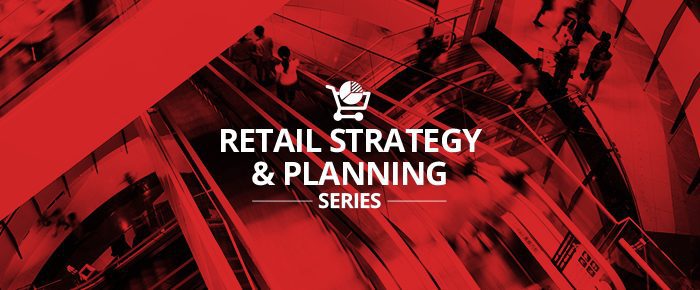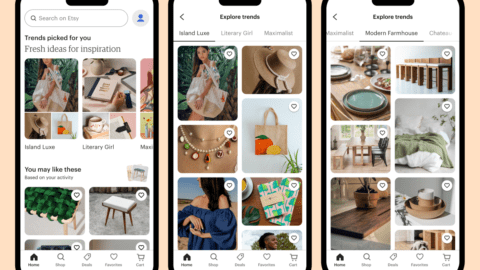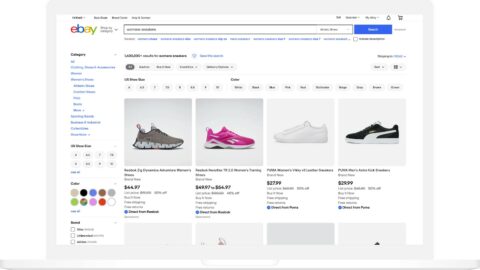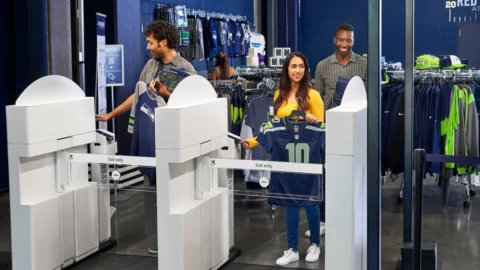Improving the shopper experience and catering to their growing expectations is rarely as simple as just upgrading the e-Commerce site, providing a greater merchandise selection or training store associates. Much of this improvement comes from aligning processes within the retailer’s back-end systems.
The Retail TouchPoints Retail Strategy & Planning (RSP17) webinar series aired live last week, and all 10 webinars are now available on demand. Four of the sessions provided details and real-world examples on how to improve the shopping experience throughout the retail enterprise, including:
-
Applying an effective machine learning roadmap to align with organizational goals;
-
Leveraging in-store mapping to gain greater insights into customer behaviors to help enhance the shopping experiences in-stores and online;
-
Deploying unified cloud communications platforms; and
-
Achieving a single view of the customer.
Machine Learning In Retail Supply Chain & Merchandising
More retailers are leveraging machine learning technologies in small doses across the entire enterprise, but they must understand the proper techniques and approaches to it if they want to maximize its benefits.
Kevin Stadler, President & CEO, and Stefano Alberti, Senior VP of Analytics at 4R Systems, shared best practices in implementing machine learning and illustrated a road map for those seeking to make the most out of the technology.
“Retail is a data production factory,” said Stadler. “The concept of Big Data is not foreign at all to retail, and it’s accelerating at an extremely fast pace. At its core, machine learning is based on the assumption that a relatively simple model with a small number of hidden factors in their interaction can explain and predict outcomes. This is particularly useful in retail, when you have that much data and it’s so hard to look through — and retail changes so fast.”
Alberti highlighted advanced machine learning techniques retailers can use to improve their supply chain and merchandising operations, such as clustering, regression and binary classification. Alberti also discussed how retailers can apply machine learning to align with organizational goals:
-
Ask the right business questions (what are we trying to achieve?);
-
Normalize your data;
-
Retain your history so the model has more data to develop under;
-
Have data science/analytics resources to supervise, enhance, iterate and validate; and
-
Supervise and assess the risks vs. opportunities before applying the machine learning model.
In-Store Mapping To Drive Customer Engagement
Unified commerce is key to retail today. Companies that win are those that can provide a consistent experience throughout all channels. Live product reviews, shopping lists, maps to help find items on shopping lists, inventory information: all of these ideas build a better experience for customers, according to Gary Sankary, who leads Industry Marketing Strategy at Esri.
More engaged shoppers are exceptionally valuable to retailers, Sankary said. “Customers who are engaged in unified commerce, according to groups we work with, are about 40% more valuable to the retailer,” he said. “Two-thirds of customers are using smartphones while shopping. [With in-store mapping] we’ve seen basket sizes increase up to 60%. In terms of purchase intent, the lift goes up 20X for those that are engaged and have a mobile app. While it’s still early for most retailers, incremental sales growth and overall customer purchase rates go up in the 30% to 40% range.”
Sankary highlighted the benefits of in-store mapping using a Geographic Information System (GIS), which can help retailers achieve greater insights into their customers to enhance their shopping experiences in-stores and online. For example, retailers can better understand in-store shopping habits so customer engagement becomes more relevant. Retailers can go as far as offering coupons or promotions — via push notifications from a shopping app — for products that are in the same aisle or location that the customer is standing in.
In-store mapping can also help retailers learn how their employees are interacting within the store and understand which areas of the store generate the most traffic, essentially giving them the information they need to better stock shelves, deploy associates to high-traffic areas, execute BOPIS and deliver exceptional customer service.
So how does this all work? Sonny Beech, IoT Business Development Manager at Geographic Information Services Inc., stated that indoor technology using Bluetooth, WiFi and/or visual light communication (LED lights that can be tracked) that pushes anonymous customer information from their mobile devices into the cloud. Once it’s captured, the data can be used to engage the shopper and push the data into the GIS to do more in-depth analysis of the data and find patterns of movements.
Cloud Communications Deep Dive: Creating A New Standard For Productivity
Today’s merchants need all the help they can get when it comes to internal collaboration and communicating with customers, and now that often means unifying these platforms under one roof. 8×8 execs Ciaran Doyle, Senior Manager of Solution Marketing, and Oisin Glynn, Solutions Architect, shared three case studies showing how:
-
A national consumer electronics retailer deployed its cloud communication system in 90+ stores in one day;
-
An office supply retailer redesigned its interactive voice response system to reduce live answer calls 20% through self-service options; and
-
Town Fair Tire deployed an integrated contact center and business phone solution in every store, saving 35% on monthly phone bills and improving customer experiences.
When it comes to deploying these systems, retailers should seek a partner that meets its specific needs, including scale, strategy, seasonality or high-touch support. Additionally, they should consider the kind of data they will need to make better decisions for both customers and the business, while understanding that reliability and consistency in platforms are not just an essential part of the customer experience, they are the customer experience.
How To Achieve A Dynamic, Single View Of The Customer
As technology continues to change consumer expectations for brands and retailers, it’s imperative that they are being met in order to maintain their loyalty. Research shows that if retailers are not meeting these expectations, they’re losing out on customers:
-
50% of consumers are more likely to switch brands if a company doesn’t anticipate their needs, according to research from Accenture; and
-
79% will take their business to a competitor within a week of a bad customer experience, according to Forbes.
Achieving a single view of the customer can provide both a solution to this challenge and an opportunity for retailers. “By moving to this environment, we can be more predictive in terms of how we engage customers and deploy solutions in real time,” said Scott Weller, Co-Founder and CTO of SessionM.
Weller highlighted four key steps to achieving the single view of the customer:
Step 1: Align your organization around a digital transformation.
Many organizations are not aligned with what it means to create a single view of the customer, or why they even should. By creating the concept of a digital transformation and setting goals related to it — including achievement for operations, marketing, sales enablement, etc. — retailers can better set themselves up for success with this initiative and future initiatives related to how tech can transform an organization.
Step 2: Establish the ‘golden record’ of customer engagement across your organization.
Agree on what the golden record of who the customer actually is, in order to determine the contract between different groups within the organization. While different organizations have different data needs in relation to the customer, these groups can agree on factors such as:
• What is the data that you need to store?;
• How do you need to normalize the data?; and
• What is the contract for sharing the data across the organization?
Step 3: Motivate your customers to lean in and identify themselves.
“We’re finding that the concept of identity resolution for many organizations is a challenged concept,” said Weller. “A lot of issues with data concern accuracy, so there is misidentification of the customer’s identity. Having the customer identify themselves is key, through methods such as app downloads, providing emails for special offers or loyalty programs.”
Step 4: Leverage technology to reduce latency in sharing the golden record across the organization.
“Leverage tech that reduces the amount of time it takes to share the data across the organization,” said Weller. “Make sure you choose a technology that will ultimately create more speed in terms of how the data will flow within your organization and achieve more consistency of that flow.”













